-
History & Society
- Education in Pre-war Hong Kong
- History of Taikoo Sugar Refinery
- Hong Kong Products Exhibition
- Local Festivals Around the Year
- Post-war Industries
- Pre-war Industry
- The Hong Kong Jockey Club Archives
- Tin Hau Festival
- Memories We Share: Hong Kong in the 1960s and 1970s
- History in Miniature: The 150th Anniversary of Stamp Issuance in Hong Kong
- A Partnership with the People: KAAA and Post-war Agricultural Hong Kong
- The Oral Legacies (I) - Intangible Cultural Heritage of Hong Kong
- Hong Kong Currency
- Hong Kong, Benevolent City: Tung Wah and the Growth of Chinese Communities
- The Oral Legacies Series II: the Representative List of the Intangible Cultural Heritage of Hong Kong
- Braving the Storm: Hong Kong under Japanese Occupation
- A Century of Fashion: Hong Kong Cheongsam Story
Geography & EnvironmentArt & Culture- Calendar Posters of Kwan Wai-nung
- Festival of Hong Kong
- Ho Sau: Poetic Photography of Daily Life
- Hong Kong Cemetery
- Sketches by Kong Kai-ming
- The Culture of Bamboo Scaffolding
- The Legend of Silk and Wood: A Hong Kong Qin Story
- Journeys of Leung Ping Kwan
- From Soya Bean Milk To Pu'er Tea
- Applauding Hong Kong Pop Legend: Roman Tam
- 他 FASHION 傳奇 EDDIE LAU 她 IMAGE 百變 劉培基
- A Eulogy of Hong Kong Landscape in Painting: The Art of Huang Bore
- Imprint of the Heart: Artistic Journey of Huang Xinbo
- Porcelain and Painting
- A Voice for the Ages, a Master of his Art – A Tribute to Lam Kar Sing
- Memories of Renowned Lyricist: Richard Lam Chun Keung's Manuscripts
- Seal Carving in Lingnan
- Literary Giant - Jin Yong and Louis Cha
Communication & Media- Hong Kong Historical Postcards
- Shaw Brothers’ Movies
- Transcending Space and Time – Early Cinematic Experience of Hong Kong
- Remembrance of the Avant-Garde: Archival Camera Collection
- Down Memory Lane: Movie Theatres of the Olden Days
- 90 Years of Public Service Broadcasting in Hong Kong
- Multifarious Arrays of Weaponry in Hong Kong Cinema
-
History & SocietyGeography & EnvironmentArt & Culture
-
View Oral History RecordsFeatured StoriesAbout Hong Kong Voices
-
Hong Kong MemoryHi! Houses: A Journey into the History of Century-old Houses with the ArtistsRecently Visited
All Items
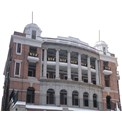
-
Dr Sun Yat-sen Museum
Built in 1914, Kom Tong Hall was originally the residence of prominent Hong Kong businessman Ho Kom Tong. It was gazetted as a Declared Monument of Hong Kong in 2010. The Hong Kong Government bought Kom Tong Hall in 2004 and converted it into the Dr Sun Yat-sen Museum.-

- 2014
-
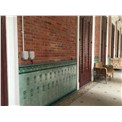
-
Corridor in Dr Sun Yat-sen Museum
The architectural details tell the life stories of the building. The patterns on the tiles give clues to the owner's interest and the cultural features of the times.-

- 2016
-
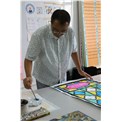
-
Artist Wilson Shieh
Wilson Shieh hoped to inject more vivacity of colours into Kom Tong Hall through his paintings.-

- 2016
-
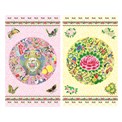
-
Guangdong, late Qing Dynasty
Dr Sun Yat-sen lived in his hometown, Cuiheng Village in Xiangshan County, Guangdong Province when he was young. The region produced a local type of enamel ware called Guangcai, or 'Canton enamels'. Such images and decorations constituted the theme of this panel. (Guangdong, late Qing Dynasty by Leung Lai Man, Jess)-

- 2017
-
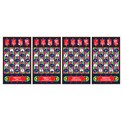
-
Early Republic of China
The window designs of Shanghai that merged traditional sculpture and western-style stained glass windows were used for featuring the period of the 1911 Revolution. (Early Republic of China by Wilson Shieh)-

- 2017
-
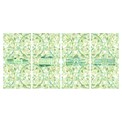
-
Hong Kong Victorian era
The screen pattern in Victorian style implied Dr Sun Yat-sen's period of studying in Hong Kong. (Hong Kong, Victorian era by Wong Wing Shan (Flyingpig))-

- 2017
-

-
Japan, Meiji period
After failure of first uprising in 1895, Dr Sun Yat-sen underwent an exile in Japan. The ukiyo-e genre which depicted Japanese customs and lifestyles was aptly regarded as the representative feature of pre-modernist Japanese art. (Japan, Meiji period by Cheng Ting Ting and Cho Wing Ki)-

- 2017
-
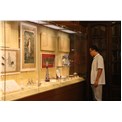
-
Artefacts in Dr Sun Yat-sen Museum
Converted into Dr Sun Yat-sen Museum, Kom Tong Hall is now displaying with historical archives and artefacts to tell the story of Dr Sun Yat-sen.-

- 2016
-
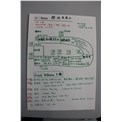
-
Seven important stages in Dr Sun Yat-sen's life
Wilson Shieh had sorted out seven important stages in Dr Sun Yat-sen's life, studying the respective regional features of the times.-

- 2016
-
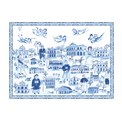
-
Macau, Portuguese style
From the 16th to 20th century, Macau had been a Portuguese colony. The blue-and-white ceramic tiles have become an iconic feature of Macau. (Macau, Portuguese style by Cho Wing Ki)-

- 2017
-
Copyright © 2012 Hong Kong Memory. All rights reserved.
| Set Name |





